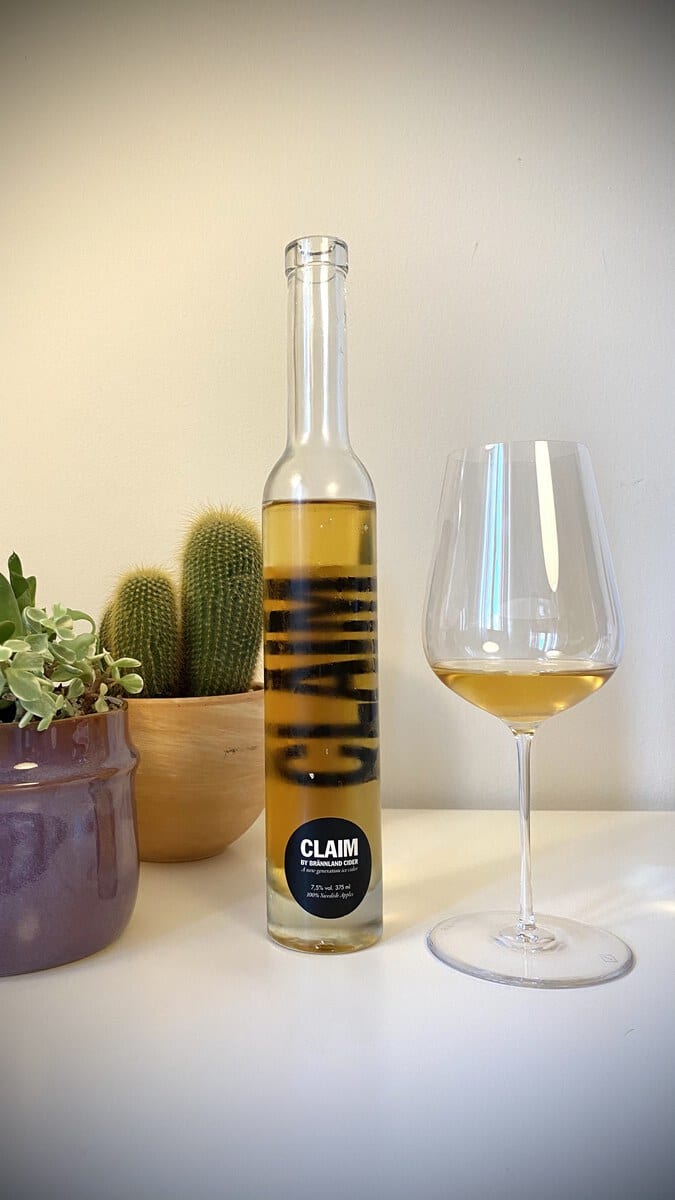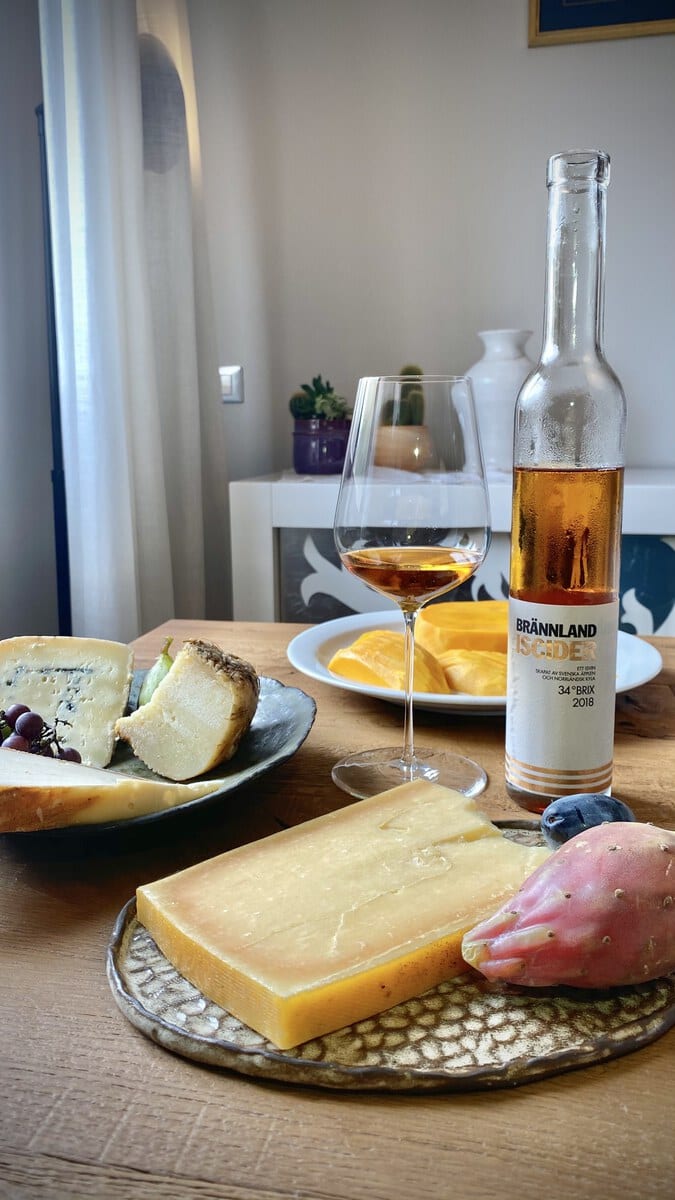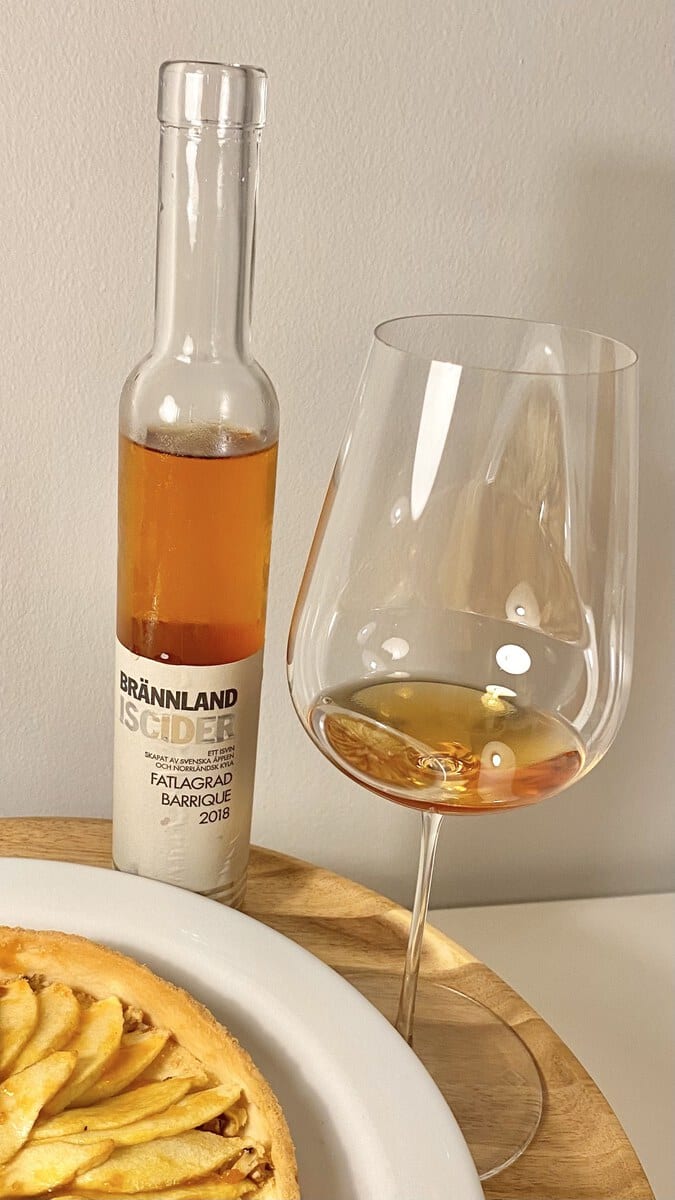Ice cider and food. A new world of pairings.
Prime ice cider is a very exciting alternative for food pairing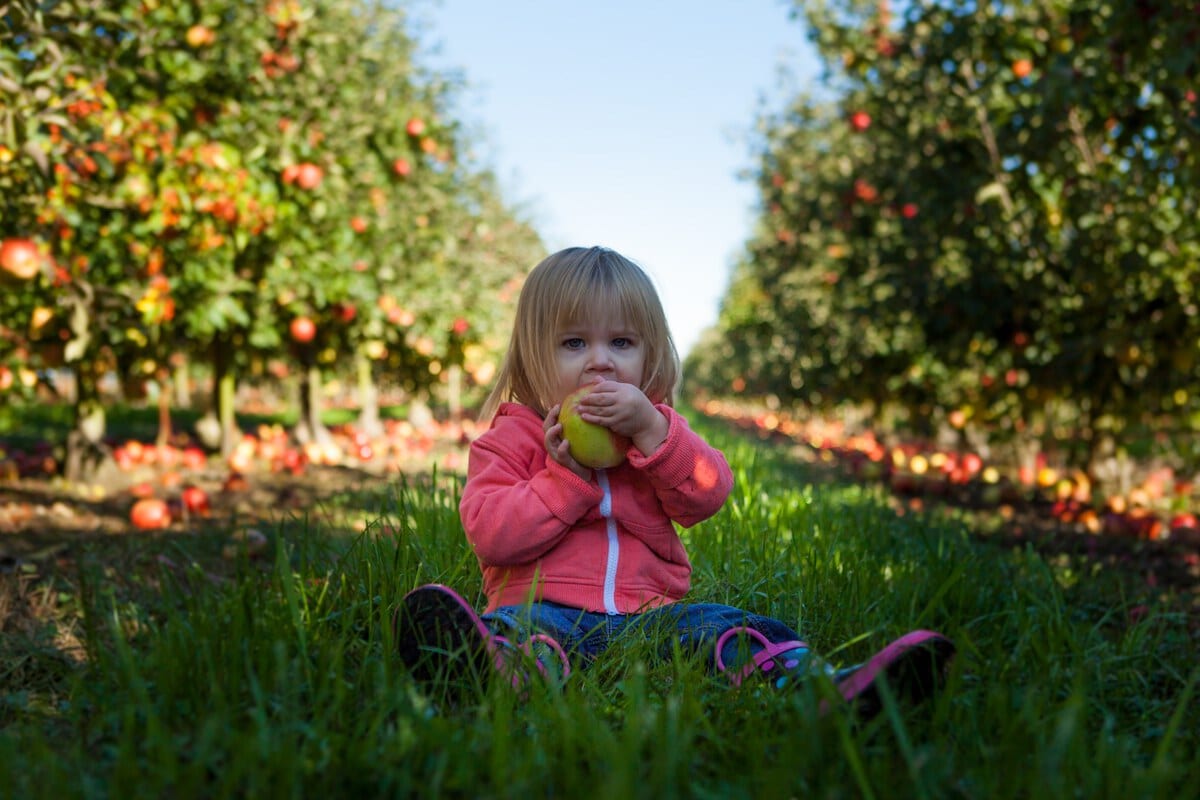
Photo by Patrick Fore
As a sommelier I get to taste many wines. And wine speaks a language I understand well enough. It depends on the bottle, of course, but I can generally identify the bouquet rather well. Thus, I can describe it with notes that speak to other people too.
I also trained in saké. I taste saké way less often than wine. Plus saké has a completely different character, range of notes and traits. This makes it very interesting for me. And a bit more challenging.
This extends to food pairing. With food and wine, I feel at ease. Give me a saké bottle and I believe I can still perform well.
What about other drinks though?
Well, I recently set myself a challenge.
Cider tasting 🍎!
And food pairing 🤓…

Photo by Joanna Nix-Walkup
Exciting and new. From time to time I find it refreshing to push myself out of my comfort zone…
In this case, the opportunity arose when lovely Andreas at Brännland Cider sent me some samples.
Brännland Cider
Brännland Cider is a Sweden based ice-cider producer. And Andreas is its founder.
After a career in software as the CEO of a digital music company, Andreas decided to change direction. He wanted to make something. Something tangible. He explored the idea of beer brewing, but hey, everyone was doing it in Sweden.
Because of the latitude of his home country he ruled out wine too.
No point in fighting nature.
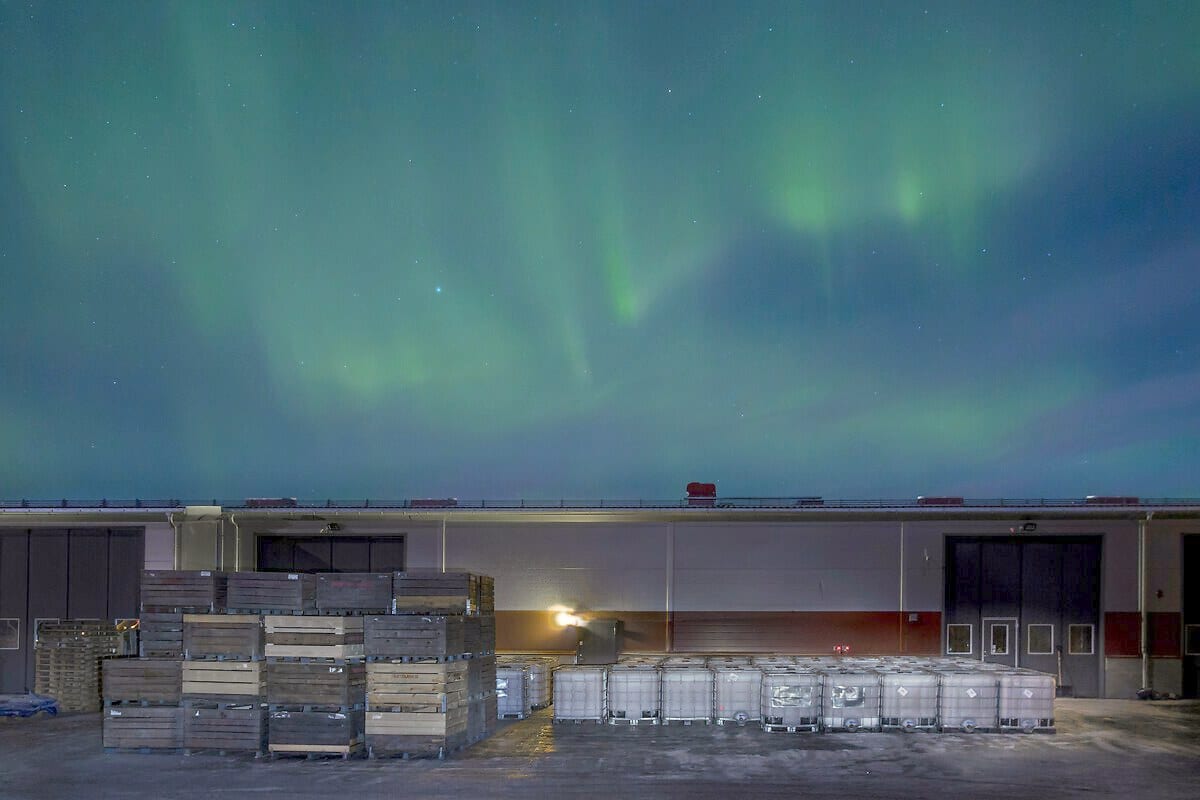
Photo courtesy of Brännland Ciders
Sweden grows a lot of apples, though…
So the cider project began to take shape.
Andrea sounds like the type of guy that doesn’t leave stuff to chance. To make good cider he started by studying the Canadian tradition of ice-cider making 1.
Studying wasn’t enough. Andreas confesses that he also needed other ice-cider makers mentorship. But eventually, after 4 years trying to make top quality cider, he had his first 450 bottles!
That was in 2012, Brännland Cider now bottles around 80000 bottles a year!!!
Ice cider vs cider
So, what is ice-cider? And why is it different from “normal” cider?
Let’s start with cider.
That is fermented apple juice.
Grapes stand to wine as apples stand to cider.
Easy.
And now ice cider.
That is cider made with either:
-
frozen apples. Those are apples which froze on the treea in the surrounding naturally cold environment (winter freezing temperatures in Canada or Sweden!);
-
frozen apple juice. Where apples are pressed into juice at harvest. This is stored for few months until winter when it is moved outdoors to freeze in the surrounding naturally cold environment;
Freezing the fruits- or their juice- concentrates the original sugar levels (by 4 or 5 times!).
And that results in a sweeter cider 🤓.
Now, that is ice cider!
Back to cider tasting!
OK, now we know the theory…
So, I was preparing myself for tasting aaand pairing three different ice ciders. Those are naturally sweet fermented drinks made with apples, as we discovered.
Before opening my bottles I knew they were going to be sweet. I suspected they would have tasting notes closer to dry cider than to wine. I was imagining notes of apple, cooked apple, hay maybe some caramel…
But compared to my knowledge of wine, I had little idea.
Claim 2018 + Chinese food!
The first bottle to pop open was Claim 2018.
I thought that among the three bottles I had, Claim was the “lighter” one. It had lower sugar levels and, proportionally, higher acidity.
Brännland Cider "Claim" 2018
100% Swedish Apple
Aromatic & fresh. White flowers & custard.
A still wine from Northern Sweden🇸🇪Sweden
I went out there and paired Claim with Chinese food.
I had it with steamed sea bream with ginger, spring onion and coriander; spicy snake beans and fish-fragrant aubergines.
I thought Claim was spot on with the sea bream. The sweetness of the cider went great with the sapid, aromatic profile of the dish. The acidic kick complemented the slight fattiness of the steaming method. Plus Claim appley profile really shone when paired with the ginger on the fish. Ginger and apple is a pair made in heaven after all!
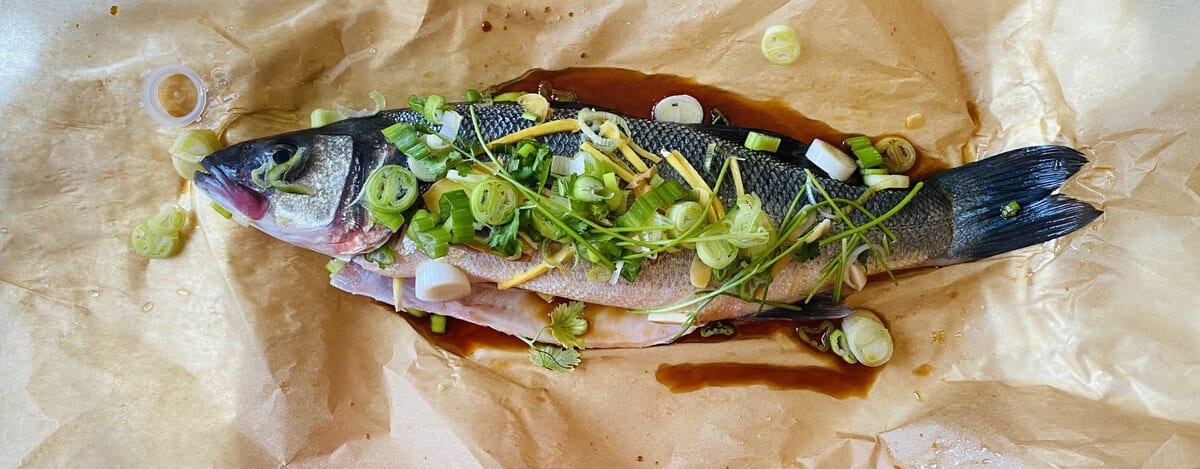
The pairing with the snake beans too, went well. I think the spiciness of the dish plus the sweetness of the cider worked great.
The fish-fragrant aubergine wasn’t such a good pick. Something didn’t work. The aubergine taste and the cider didn’t complement or enhanced each other. It wasn’t terrible, don’t get me wrong. Just nothing to write home about.
Iscider 2018 + cheeses!
Iscider 2018 was going to have a more traditional ice cider profile, I thought.
By that I mean higher sugar levels and a more pronounced apple character. I envisaged a more concentrated, viscous drink.
Brännland Cider "Iscider" 2018
100% Swedish Apple
Round & candied. Apple & freshly cut grass.
A still wine from Northern Sweden🇸🇪Sweden
I decided to try Iscider 2018 with cheeses. And I picked them strong and smelly 🧀!
I selected:
- a goat blue cheese;
- a goat toma;
- a pecorino matured in hay;
- a younger pecorino;
- and a ripe buffalo hard cheese, grana di bufala.
Funny fact about me, I’m intolerant to cow milk. Thus the eccentric choice of cheeses 😅!
Forget the younger pecorino. It was too weak and the ice cider overpowered it.
The hay-matured pecorino was bitter and nutty, it had a dry coconut touch even. When paired with Iscider the bitterness and ripeness of the cheese were enhanced, in a good way. Then the sweetness of the ice-cider kicked in and complemented well the mouthful.
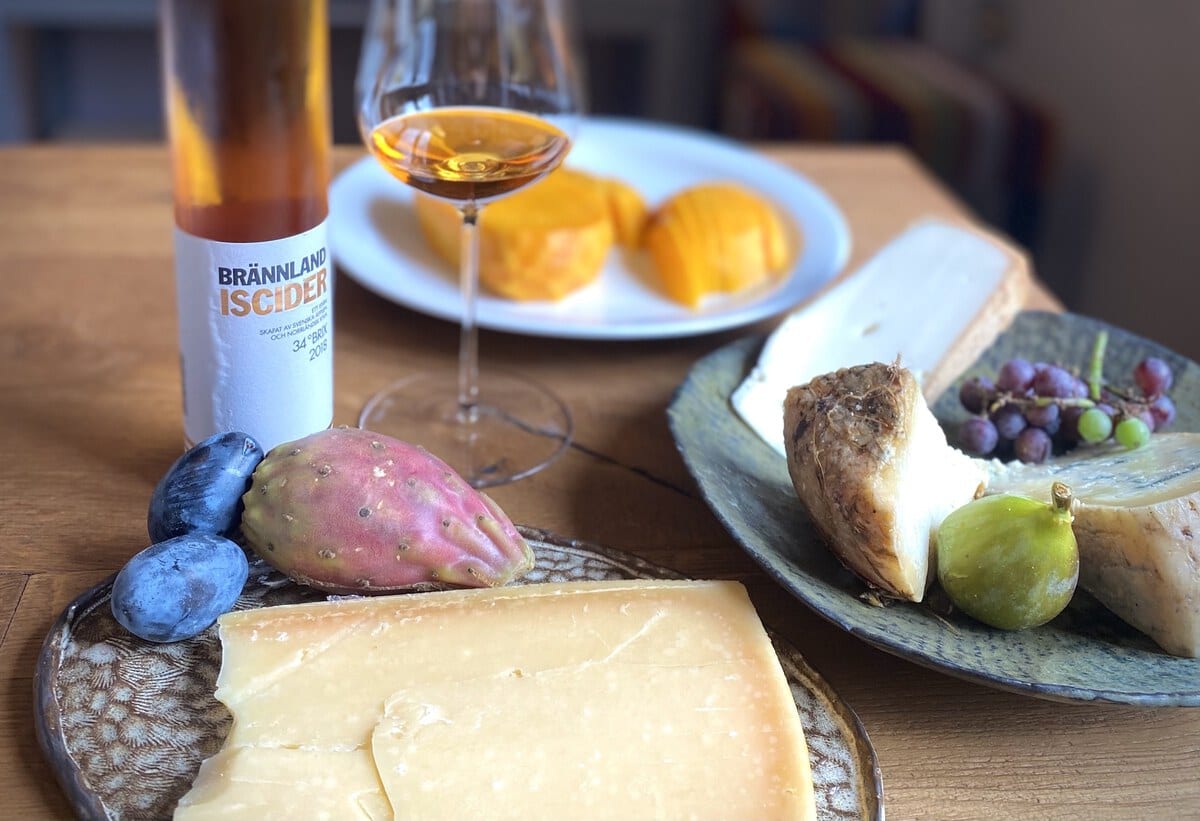
The goat toma had a farmy profile, nutty with a hay, bitter note. The combo with the ice cider was great! The hay note became stronger and the pairing developed into a fruity, very pleasant note. Toma and Iscider 2018 really shone!
The buffalo cheese was a hard cheese, crumbly, nutty, deep and umami. In a way it reminded me of French compté but more crumbly and sapid. The pairing with Iscider was very good. It produced more nuttiness and more fruitiness. Both elements, together, became way more than the sum of themselves!
The goat blue cheese was rather intense and mature, spicy and earthy but also creamy and fatty.
I had to try small quantities of it with the cider. Cheese and cider together became more intense and the spiciness got enhanced. This combo really had a kick to it. Too much perhaps. And I was picking small pieces of cheese. Reality was, the blue cheese was too strong for the cider. It didn’t go badly with it, but it wasn’t a perfect pairing.
My conclusion was: Iscider 2018 is best drank with grassy, nutty, farmy cheeses. Think of dew-wet hay and sunrises in the Alps 🏞!
Iscider Fatlagrad Barrique 2018 + Apple & Apricot tart
Finally it was Iscider Fatlagrad Barrique 2018 turn!
About this bottle I knew few things. That the residual sugar content was the highest of the three ice ciders Andreas sent me. Yet, that the freshness was also quite pronounced. So I wasn’t expecting anything cloying!
Brännland Cider "Iscider Fatlagrad Barrique" 2018
100% Swedish Apple
Evolved yet refreshing. Dried apricot & vanilla.
A still wine from Northern Sweden🇸🇪Sweden
As the label suggests, Iscider Fatlagrad Barrique is aged in barrique. So I suspected some extra spice notes and a more evolved character.
For my food pairing I was thinking dessert.
I picked apple & apricot tart on a walnut shortcrust bed.
And as the proof is in the pudding, as they say… How did it go?
The apple element from the tart didn’t bring much to the pairing.
That was a bit deceiving.
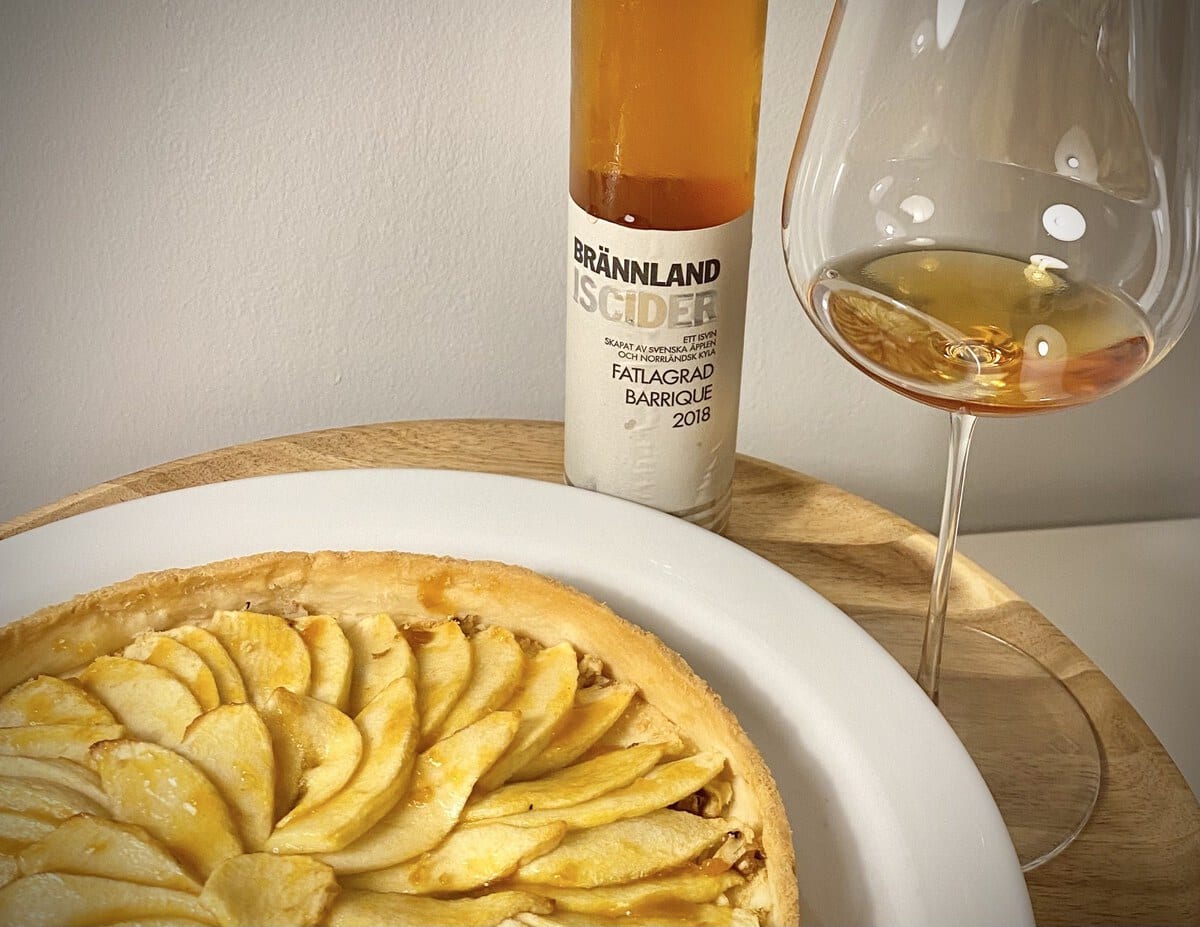
What made the combo vibrant, instead, was the apricot. With it, the mouthful was elevated and became juicy and plum. Succulent. Yummy.
In high-sight I would pair Iscider Fatlagrad Barrique 2018 with an apricot tart. 100 times!
Ice cider & food pairing
Tasting and pairing premium ice ciders for me was a little adventure. I set off with the right equipment, sure. But there was a novel element that made it all a bit more challenging and more exciting too. It was stimulating and surprising!
Brännland ice ciders proved to be top quality.
They also showed characteristics I wasn’t expecting. The most surprising one was their vibrant freshness. It kept the drinks refreshing and moreish. No sip was ever too sweet.
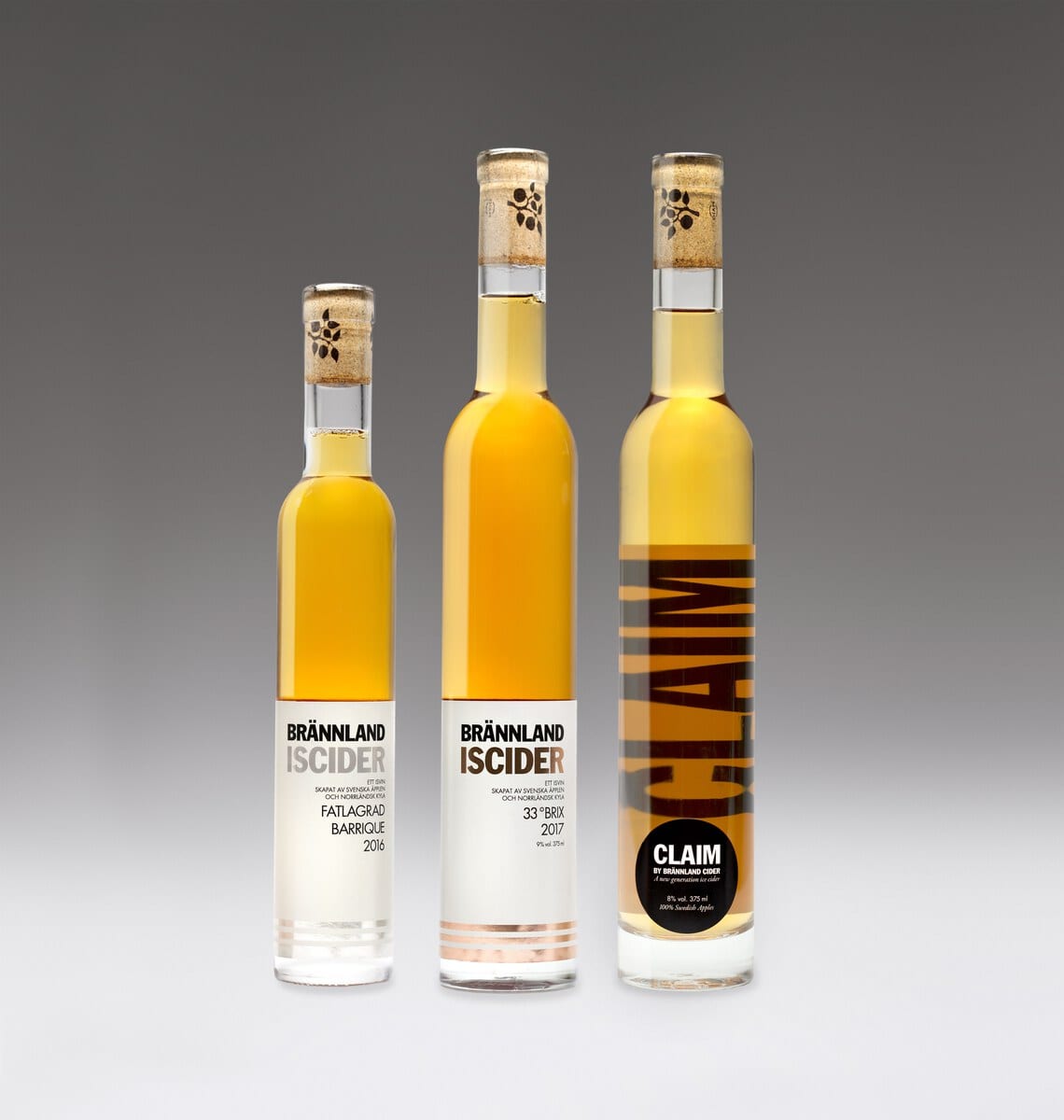
Photo courtesy of Brännland Ciders
With ciders and ice-ciders like Brännland, an entire world of new, exciting food pairing opens up.
It’s no surprise that Andreas got his ciders on the drink list of some first class restaurants around the world!
And I’m so glad he increased the production from 450 to 80000 bottles per year. The quality wasn’t affected and that makes 79.550 more lucky drinkers!
-
Ice cider production was started in Canada in the 90s by Christian Barthomeu. He is a Canadian ice-wine maker who also owed an orchard and liked experimenting. ↩

